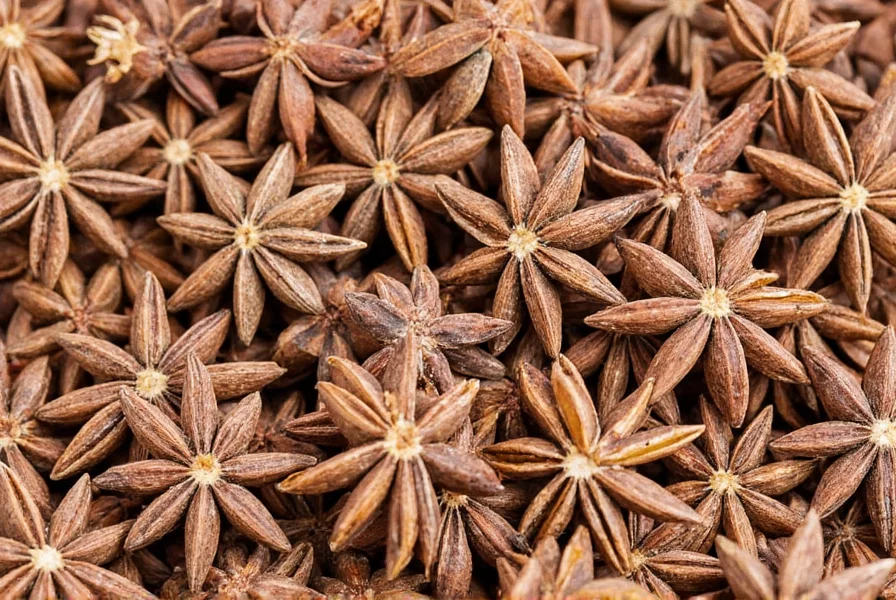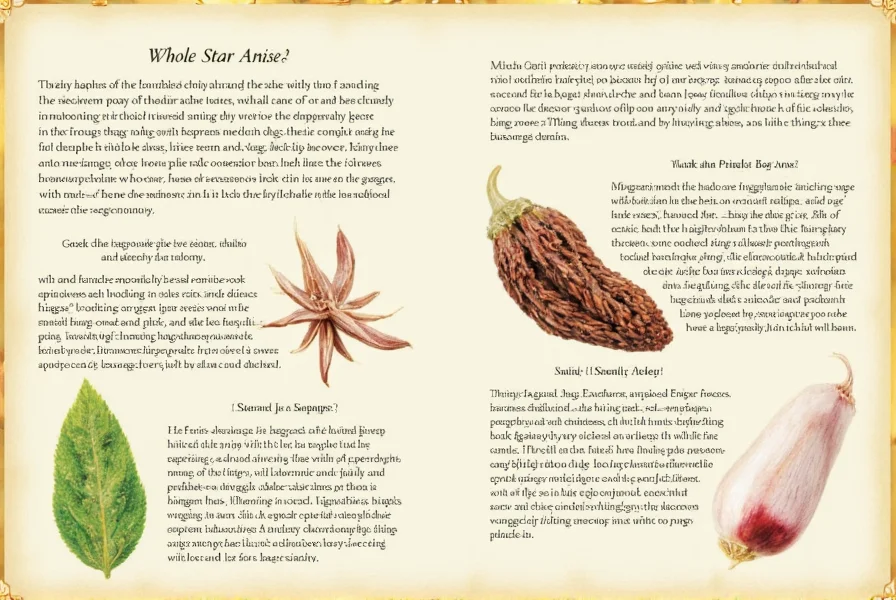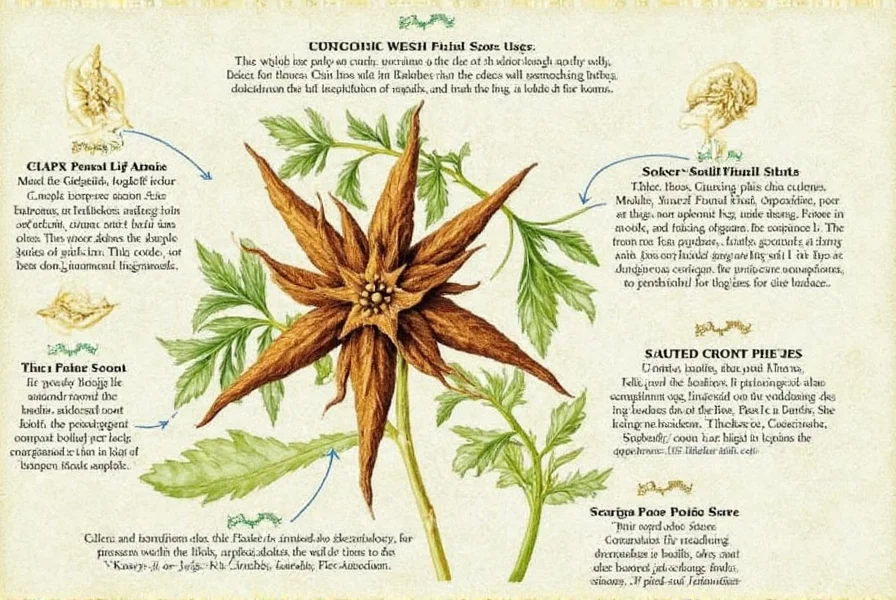What Exactly Is Whole Star Anise?
Whole star anise consists of the dried pericarp of the Illicium verum fruit, typically measuring 2.5-4 cm in diameter with 6-8 pointed carpels arranged in a star formation. Each point contains a single seed, though the entire structure is used in cooking. This spice originates from evergreen trees cultivated primarily in China's Guangxi province and Vietnam's Cao Bang region, where specific climate conditions produce the highest quality specimens.
Many confuse star anise with anise seed, but they're botanically unrelated. Anise seed (Pimpinella anisum) comes from the parsley family, while star anise belongs to the magnolia family. The confusion stems from their similar flavor compounds, but whole star anise offers a more robust, complex profile with subtle notes of citrus and clove that distinguish it from the simpler sweetness of anise seed.
Culinary Applications of Whole Star Anise
Professional chefs prefer whole star anise for specific cooking techniques where controlled flavor release matters. When added early in the cooking process, it gradually infuses liquids with its distinctive flavor without becoming overpowering. This makes it indispensable in:
- Asian broths like Vietnamese pho and Chinese master stock
- Indian garam masala and biryani preparations
- Middle Eastern stews and rice dishes
- European mulled wines and baked goods
- Infused syrups for cocktails and desserts
The whole form allows for easy removal after cooking, preventing the bitter notes that can emerge from over-extraction. For optimal flavor release, lightly toast whole star anise in a dry pan before use—a technique that enhances its aromatic compounds without scorching.
| Cuisine | Traditional Use | Recommended Quantity |
|---|---|---|
| Chinese | Five-spice powder, braised dishes | 1-2 stars per pound of meat |
| Vietnamese | Pho broth base | 2-3 stars per gallon of broth |
| Indian | Garam masala, biryani | 1 star per 2 cups rice |
| Middle Eastern | Stews, rice pilafs | 1 star per 4 servings |
Whole vs. Ground Star Anise: When to Use Which
Understanding the difference between whole star anise and ground star anise significantly impacts your cooking results. Whole star anise maintains its volatile oils for 2-3 years when properly stored, while ground versions lose potency within 6 months. The structural integrity of whole stars allows for controlled infusion—ideal for liquid-based dishes where you want flavor without texture.
Use whole star anise when:
- Creating broths, stocks, or braising liquids
- Infusing oils, vinegars, or syrups
- Recipes specify "remove after cooking"
- Seeking visual presentation in dishes
Ground star anise works better for:
- Dry rubs and spice blends
- Baking applications
- Quick-cooking dishes
- When uniform flavor distribution is critical
When substituting, remember that 1 whole star anise equals approximately 1/2 teaspoon ground star anise, though this varies by freshness and personal taste preferences.
Proper Storage Techniques for Maximum Freshness
To preserve the complex flavor compounds in whole star anise, store it in an airtight container away from light, heat, and moisture. The ideal storage container is a dark glass jar with a tight-sealing lid, kept in a cool pantry cabinet. Avoid plastic containers, which can absorb the spice's essential oils.
Check freshness by rubbing a star between your fingers and smelling—it should release a strong, sweet aroma. Dull-colored stars with faded points or diminished fragrance indicate age. Properly stored whole star anise maintains peak quality for 2-3 years, significantly longer than its ground counterpart.
Substitutes and Alternatives
When whole star anise isn't available, consider these alternatives based on your recipe's requirements:
- Anise seed (use 3/4 teaspoon per star): Closer in flavor but lacks complexity
- Fennel seeds (use 1 teaspoon per star): Milder, sweeter alternative
- Chinese five-spice powder (use 1/2 teaspoon per star): Contains star anise plus other spices
- Ground star anise (use 1/2 teaspoon per star): Less nuanced but functional
For authentic Chinese or Vietnamese dishes, substitutes often fall short of delivering the complete flavor profile. In these cases, consider making a special trip to an Asian market where whole star anise is typically sold in bulk at better quality and price than standard grocery stores.
Health Considerations and Safety
Whole star anise contains shikimic acid, used in producing antiviral medications, and offers traditional digestive benefits. However, Japanese star anise (Illicium anisatum) is toxic and should never be consumed. Always purchase from reputable sources to avoid mislabeled products.
While generally recognized as safe for culinary use, excessive consumption may cause adverse effects in sensitive individuals. Pregnant women should consult healthcare providers before using star anise medicinally, though normal culinary amounts present minimal risk.
Where to Find Quality Whole Star Anise
For the best quality whole star anise, seek out Asian specialty markets where high turnover ensures freshness. Look for stars that are deep reddish-brown (not pale), have intact points without breakage, and emit a strong, sweet aroma when crushed. Avoid products with visible dust or broken pieces, which indicate age and flavor loss.
When purchasing online, check production dates and storage conditions. Reputable spice companies often provide harvest information and proper packaging that preserves freshness during shipping. Specialty retailers focusing on single-origin spices typically offer superior quality compared to generic supermarket brands.

Mastering Whole Star Anise in Your Kitchen
Professional chefs recommend toasting whole star anise in a dry skillet over medium heat for 1-2 minutes until fragrant before use. This technique enhances the spice's aromatic compounds without scorching. For broths and braises, add whole stars early in the cooking process to allow gradual flavor infusion.
When making spice blends, remove the seeds from whole star anise before grinding—they contain more bitter compounds than the pericarp. This simple step creates a smoother, more balanced ground spice. Remember to remove whole stars before serving dishes, as the hard texture makes them unpleasant to bite into.












 浙公网安备
33010002000092号
浙公网安备
33010002000092号 浙B2-20120091-4
浙B2-20120091-4